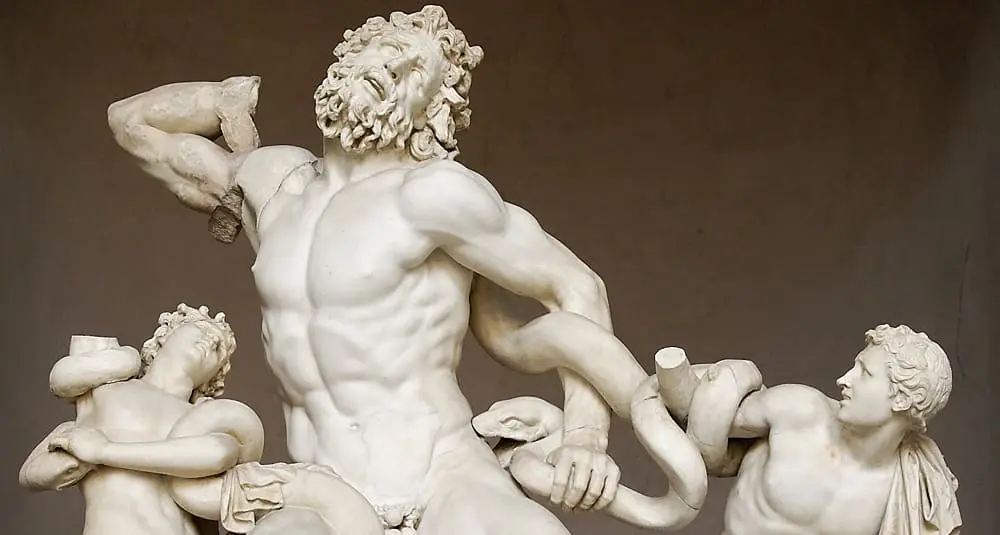What’s the story behind the sculpture Laocoon and his sons?
Last Updated:
Laocoon and his sons is a famous sculpture from Greco-Roman antiquity depicting the Trojan priest Laocoon and his two sons, Antiphas and Thymbrea, attacked by two gigantic snakes sent by the gods.
The story of this work is linked to the Trojan War. According to legend, Laocoon, priest of Apollo, tried to warn the Trojans of the danger posed by the wooden horse left behind by the Greeks. Suspecting a trap, he uttered the famous words: Timeo Danaos et dona ferentes (I fear the Greeks, even when they give me gifts).
To punish him for trying to prevent the Trojan horse from entering the city, the gods, sympathetic to the Greeks, sent two giant snakes to strangle Laocoon and his two sons. This divine punishment dissuaded the Trojans from following Laocoon’s advice, allowing the Greeks to implement their stratagem and bring about Troy’s downfall.
Discovered in Rome in 1506, this marble sculpture, attributed to Greek artists, exerted a major influence on Renaissance art. Now housed in the Vatican, it remains one of the most impressive works of ancient art, marked by the dramatic intensity and movement of bodies in pain and despair.
You may also be interested in
arts

What's the story behind the sculpture Laocoon and his sons?
Answer
The sculpture Laocoon and his sons depicts Laocoon, a Trojan priest, and his two sons being attacked by snakes, punished by the gods for trying to warn Troy.